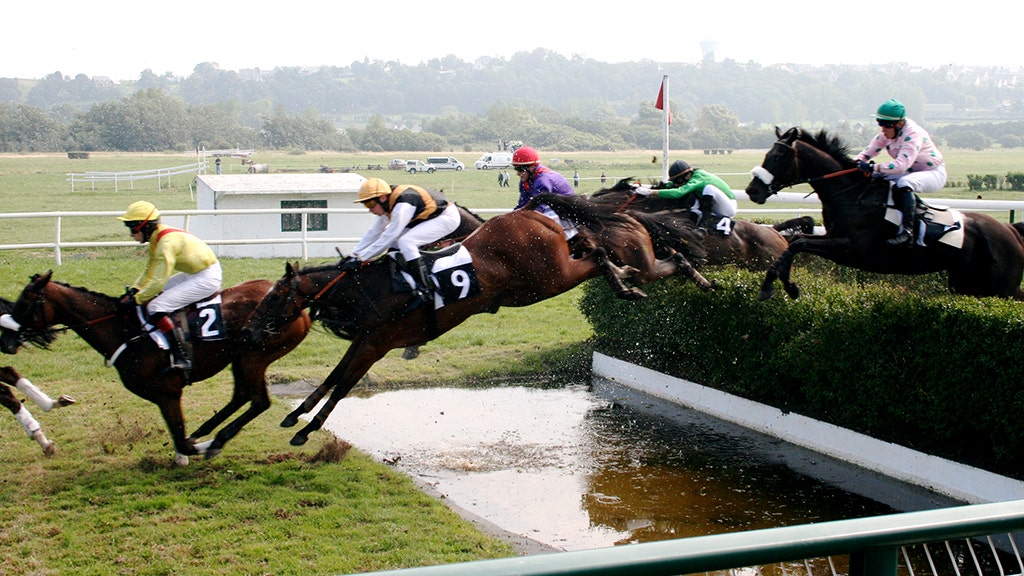Consequences of a Steeplechase Fall: Men’s Steeplechase Fall

The steeplechase, a demanding event combining running and obstacle-clearing, inherently carries a risk of falls. These falls can result in a range of injuries, both immediate and long-term, affecting an athlete’s physical and mental well-being, as well as their race performance.
Injuries Resulting from Steeplechase Falls
Falls in steeplechase can lead to a wide range of injuries, from minor abrasions to severe fractures. The nature and severity of the injury depend on factors such as the height of the fall, the surface of impact, and the body part involved.
- Soft Tissue Injuries: These include sprains, strains, contusions, and lacerations. These injuries often occur due to the impact of the fall or the twisting motion of the body during the fall.
- Fractures: Falls can result in fractures of the bones in the legs, arms, or even the skull. The risk of fracture increases with the height of the fall and the force of impact.
- Dislocations: Falls can also cause dislocations, particularly in the shoulders, hips, and knees.
- Head Injuries: Falls, especially those involving a direct impact to the head, can lead to concussions, skull fractures, and other head injuries.
Notable Steeplechase Falls and Resulting Injuries
Several significant falls in steeplechase history have resulted in severe injuries, highlighting the inherent risk of the event.
- Mahiedine Mekhissi-Benabbad (2013 World Championships): In the 2013 World Championships, Mekhissi-Benabbad, a French steeplechaser, tripped over the final water jump, falling and injuring his left ankle. He was unable to finish the race and subsequently underwent surgery. The fall ultimately ended his season and affected his preparation for the 2014 season.
- Evan Jager (2016 Olympic Games): Jager, an American steeplechaser, suffered a severe ankle injury after a fall in the 2016 Olympic Games final. The fall, which occurred during the second lap of the race, forced Jager to withdraw from the competition and miss several months of training. He eventually recovered and returned to competition, but the injury had a significant impact on his performance in the following years.
Psychological Impact of a Fall
Steeplechase falls can have a profound psychological impact on athletes, affecting their confidence and performance.
- Fear of Falling: After experiencing a fall, athletes may develop a fear of falling, which can affect their approach to obstacles and their overall race strategy. This fear can lead to hesitation and a reluctance to take risks, ultimately hindering their performance.
- Loss of Confidence: A fall can also erode an athlete’s confidence in their ability to compete at a high level. The experience of falling and getting injured can lead to doubts about their fitness, technique, and overall competitiveness.
- Mental Block: In some cases, athletes may develop a mental block after a fall, making it difficult for them to focus on the race and perform at their best. This mental block can be particularly challenging to overcome, requiring extensive mental training and support.
Impact of a Fall on Race Strategy and Tactics, Men’s steeplechase fall
A fall can significantly alter an athlete’s race strategy and tactics.
- Conservative Approach: After a fall, athletes may adopt a more conservative approach to the race, focusing on avoiding further injury rather than pushing for a strong finish. This can lead to a slower pace and a less aggressive race strategy.
- Increased Caution: Athletes may also become more cautious when approaching obstacles, slowing down their pace and taking a more conservative approach to clearing the hurdles and water jumps. This increased caution can affect their overall race time and their ability to compete effectively.
- Mental Recovery: In addition to physical recovery, athletes need to focus on mental recovery after a fall. This involves regaining confidence, overcoming fear, and developing a positive mindset to approach future races with renewed determination.
Men’s steeplechase fall – The men’s steeplechase is a race of raw power and calculated grace, where a single stumble can send a competitor crashing to the ground. Yet, there’s a nation that has mastered this precarious dance, a nation where the steeplechase is not just a race, but a legacy.
Ethiopia’s steeplechase prowess is a testament to their endurance and agility, a reminder that even in the face of the most challenging obstacles, triumph can be achieved. And so, the men’s steeplechase fall, a poignant moment of defeat, serves as a stark contrast to the enduring spirit of Ethiopian athletes, who continue to dominate the race with their unwavering determination.
The men’s steeplechase fall echoed through the stadium, a jarring note against the rhythm of the race. It was a moment of vulnerability, a stark reminder of the fragility of human ambition. Perhaps the athlete could find solace in the comfort of a brown leather studded chair , its sturdy presence offering a haven from the relentless demands of the sport.
He would rise again, stronger and more determined, ready to face the next hurdle, the next challenge.